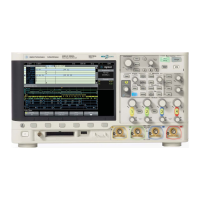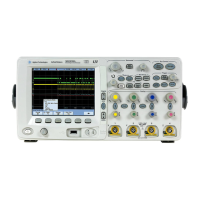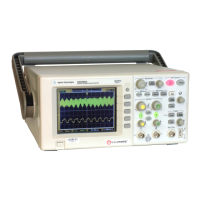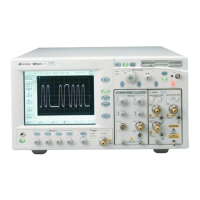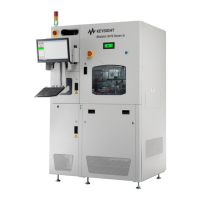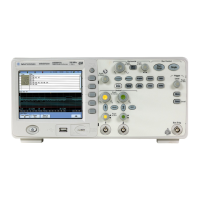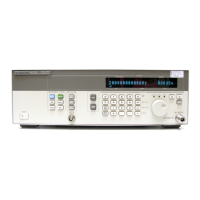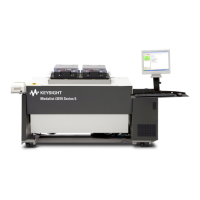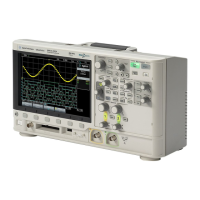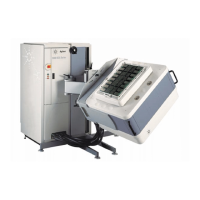318 Agilent InfiniiVision 3000 X-Series Oscilloscopes User's Guide
21 Reference
Probes and Accessories
This setion lists the probes and accessories that are compatible with the
3000 X-Series oscilloscopes.
• "Passive Probes" on page 319
• "Single- Ended Active Probes" on page 319
• "Differential Probes" on page 320
• "Current Probes" on page 321
• "Accessories Available" on page 322
AutoProbe
Interface
Most Agilent single- ended active, differential, and current probes are
compatible with the AutoProbe interface. Active probes that do not have
their own external power supply require substantial power from the
AutoProbe interface.
In the following tables, for AutoProbe interface compatible probes,
"Quantity Supported" indicates the maximum number of each type of
active probe that can be connected to the oscilloscope.
If too much current is drawn from the AutoProbe interface, an error
message will be displayed, indicating that you must momentarily
disconnect all probes to reset the AutoProbe interface, then connect only
the supported quantity of active probes.
See Also For more information on probes and accessories, see "www.agilent.com"
for:
• "Probes and Accessories Selection Guide (5989- 6162EN)"
• "5000, 6000, and 7000 Series InfiniiVision Oscilloscope Probes and
Accessories Data Sheet (5968- 8153EN)"
Pollution Degree
Definitions
Pollution Degree 1: No pollution or only dry, non-conductive pollution occurs.
The pollution has no influence. Example: A clean room or climate controlled
office environment.
Pollution Degree 2. Normally only dry non-conductive pollution occurs.
Occasionally a temporary conductivity caused by condensation may occur.
Example: General indoor environment.
Pollution Degree 3: Conductive pollution occurs, or dry, non-conductive
pollution occurs which becomes conductive due to condensation which is
expected. Example: Sheltered outdoor environment.
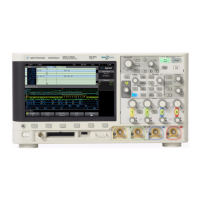
